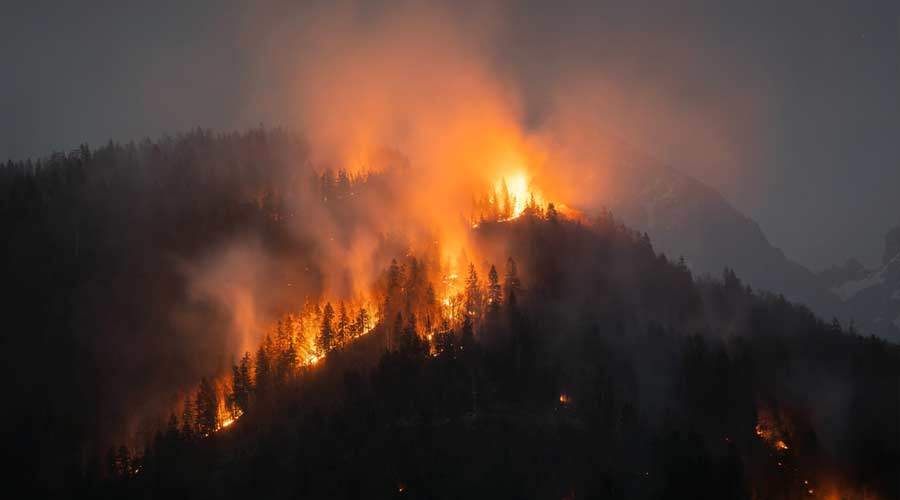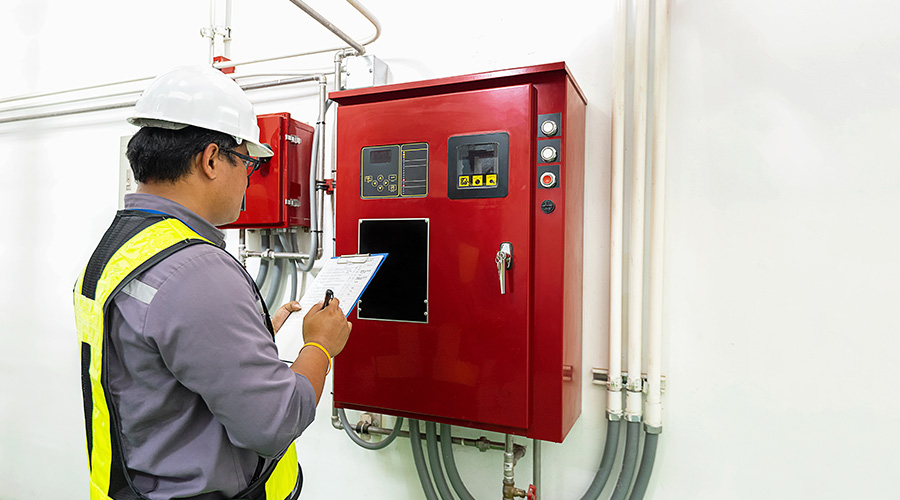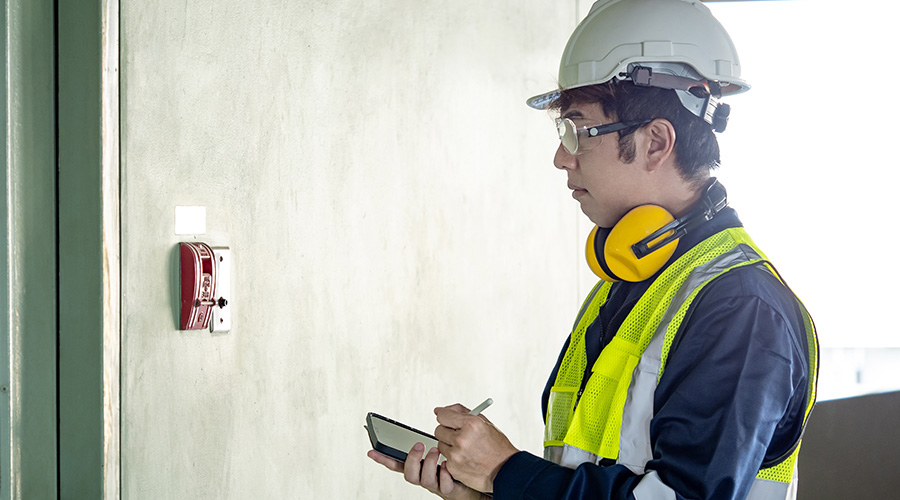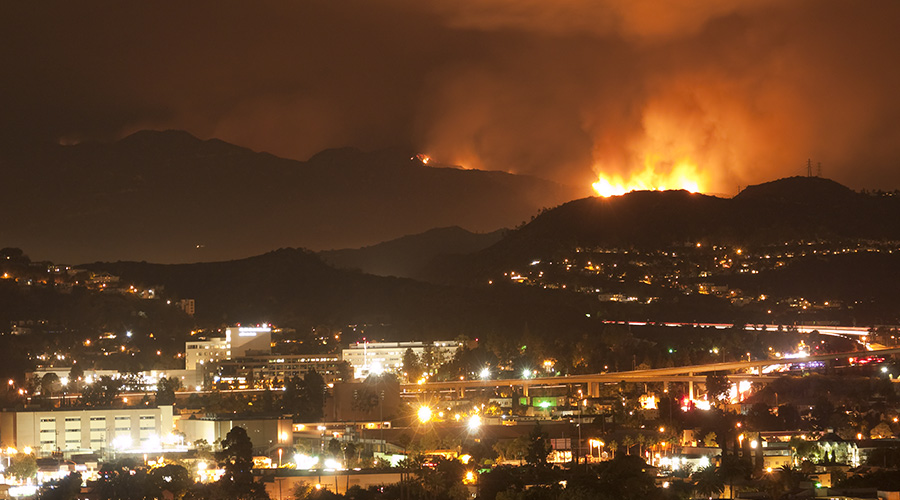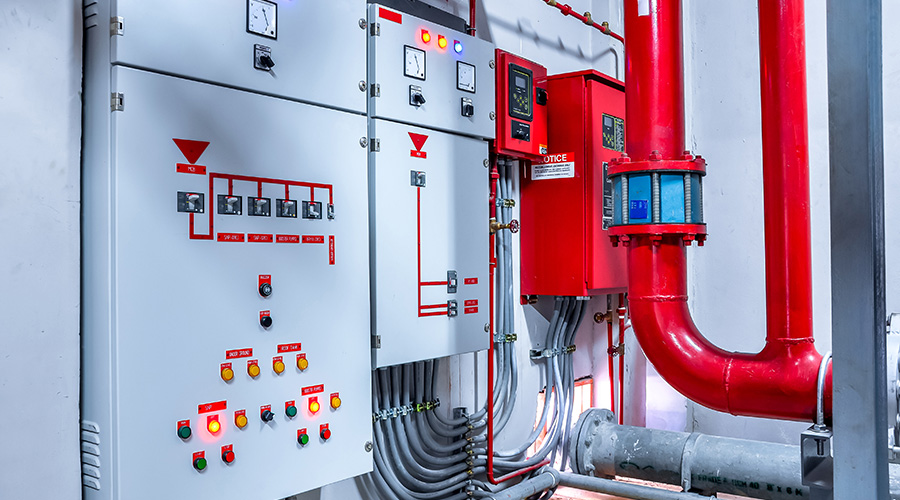How Managers Can Prepare for Wildfire Season
Preparedness will minimize the impact that wildfires have on facilities, occupants and operations.
This is part two of a two-part article. To read the first part, please click here.
Given the growing concerns about the threat to buildings from wildfires, managers need to pay greater attention to the types of vegetation to be planted within the three defensive zones. Some people have claimed that certain plants are “fire-safe.” Unfortunately for managers, no standards exist for rating the flammability of a plant or testing a plant’s flammability.
While some plants resist ignition more readily than others, all plants will burn if the conditions are right, and wind-driven wildfires provide those conditions. Plant maintenance and the environment in which the plant is growing have a greater influence on a plant’s flammability than the way it is labeled. Work is underway to reach agreement on how to test and rate plant flammability, but it will take some time before that occurs.
Managers can follow several generalizations when selecting plants. Avoid plants that contain high levels of waxes, resins and oils, which can burn readily and release more thermal energy.
Some densely structured plants might start with lush growth but later produce areas filled with woody, dead components. This type of structure can capture wind-blown embers and readily ignite.
Not all plants have the same growth rate. Rapid-growth plants might quickly challenge the spacing requirements within each of the three defense zones surrounding the building. Similarly tall-growing plants might negate the desired zone spacing.
Regardless of the type of vegetation selected, managers must regularly review conditions within each of the defense zones to ensure that each one continues to provide the level of protection originally planned.
Protecting the building envelope
To increase wildfire protection for facilities, managers involved in new construction need to specify non-combustible materials, such as masonry, steel and ceramics, for building envelopes. Not only will these materials not burn, they will not release vapors when exposed to flame. All windows should be dual-glazed and constructed from tempered glass. Operable windows should include full-coverage window screens.
Any roof section to be installed on a building should be a Class A fire-rated covering. Class A is the highest rating and offers the greatest resistance to fire. Common Class A roofing includes clay tiles, slate, asphalt glass fiber composition shingles, concrete tiles and metal. A Class A rating does not mean the roof is fireproof. Rather, they are fire-resistant. Given enough heat and exposure, Class A roofing can either burn or transmit enough heat energy into the building interior to ignite other building materials.
For existing construction, managers can take steps in two areas to help protect their buildings — modifications and maintenance.
One of the simplest modifications includes installing 1/8 inch or smaller screening on all exterior vents to prevent wind-blown embers from entering the building. Once installed, these screens need to be inspected several times a year to ensure they are properly attached and provide full coverage.
If signs are mounted on the exterior of the building, technicians should construct them from non-combustible materials, and wall penetrations should be sealed with a fire-retardant material.
When replacing building envelope components, managers should look to upgrade the fire resistance of those components. As with new roofs, replacement roofs should have a Class A fire rating. When replacing windows, managers should select windows that use tempered glass to better resist the shattering of glass that can result from the temperature difference between the building interior and exterior.
The most important task in protecting a building envelope is regular inspections. Technicians should look for debris on roofs, in gutters and in close contact with exterior components. They should inspect vent openings to make certain the screening protecting them is in place and secure. If modifications have been made, such as replacing a roof-mounted HVAC system, they should make sure the work did not leave unprotected openings where embers could enter the building.
Preparing for trouble
Taking steps to protect facilities, occupants and operations from wildfires goes beyond physically preparing the grounds and the building envelope. Managers also must have a plan in place before a wildfire strikes.
They should start with early notification. Managers can download the Federal Emergency Management Agency (FEMA) app to receive real-time alerts from the National Weather Service. They can sign up for wireless emergency alerts from authorized federal, state and local authorities that are broadcast to mobile devices in a locally targeted area; no app is required. Both measures provide warnings of a range of developing emergencies, including approaching wildfires.
Managers also should have a wildfire response plan in place and make certain employees and other building occupants understand the plan and how to comply with it. The plan should include a list of conditions that would trigger implementation of the plan, identify who has the authority to trigger the plan, spell out specific evacuation procedures, identify procedures to account for evacuated building occupants, and list emergency response functions to be performed and who is to perform them.
Managers must not overlook the impact smoke will have on the facility, occupants and operations. Wildfire smoke contains a mixture of gases and fine particles from burning vegetation and building materials. At sufficiently high levels, these particles can become hazardous to building occupants.
To limit the impact of smoke affecting building occupants, managers should follow local air quality reports. A wildfire might be tens of miles away, but its smoke can travel hundreds of miles and affect local air quality. Air quality reports will help managers know when it is necessary to take additional steps to protect against high levels of smoke.
Managers also must make certain windows and doors are tightly closed. They should not reduce or eliminate the quantity of outdoor air brought into the building through the HVAC system. This step will create negative air pressure in the facility and allow unfiltered air to enter. Instead, they must make certain the systems are equipped with the highest efficiency filters that the system can handle and that those filters and their housings properly seal.
Preparedness will minimize the impact that wildfires have on facilities, occupants and operations.
James Piper, P.E., is a national consultant based in Bowie, Maryland. He has more than 35 years of experience with facilities maintenance, engineering and management issues.
Related Topics:








